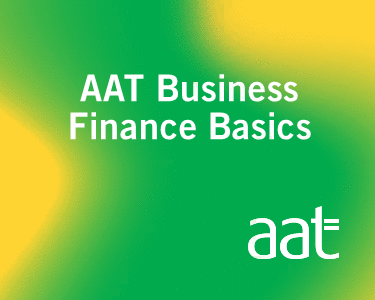The tax point (or ‘time of supply’) for a transaction is the date the transaction takes place for VAT purposes. There are different types of tax points and you’ll need to make sure you get the right transaction on the right VAT Return.
What is a tax point and why is it important?
The tax point, or ‘time of supply’, for a transaction is the date the transaction takes place for VAT purposes.
The tax point is important because it will tell you which VAT period a transaction belongs to and on which VAT return to include the transaction. The tax point must be shown on a VAT invoice.
Generally, you must pay or reclaim VAT in the VAT period in which the time of supply occurs (usually quarterly), and use the correct rate of VAT in force on that date. This means you’ll need to know the time of supply/tax point for every transaction so you can put it on the right VAT Return. You cannot delay accounting for VAT until you have received payment from a customer.
Tax doesn't need to be taxing
We'll email you expert tips to help you manage your business finances. You can unsubscribe at any time.
What is the date of supply?
Before we look at the tax point in more detail, we need to understand the date of supply.
-
![Doing a stock check]()
For goods, the date of supply is the date the goods are sent by the supplier, collected by the customer or made available to the customer (for example a washing machine delivered to a hair salon).
-
![Working through financial documents]()
For services, the date of supply is the date the work is complete (for example an accountant completing a set of accounts for a customer).
How do I know what the tax point is?
The tax point will vary depending on the circumstances.
| Invoice? | Tax point |
|---|---|
| No invoice needed | If no invoice is needed, the tax point will be the date of supply. |
| VAT invoice issued (within 14 days) | If a VAT invoice has been issued within 14 days of the supply, the tax point will be the date of the invoice. |
| VAT invoice issued (after 14 days) | If a VAT invoice has been issued 15 days or more after the date of supply, the tax point will be the date of supply. |
| Payment received or VAT invoice issued in advance | If a payment is received or a VAT invoice is issued in advance of the supply being made, the tax point will be the earlier of either the date payment is received or the invoice date. |
| Payment received in advance | If a payment is received in advance of the supply being made and a VAT invoice has yet to be issued, the tax point will be the date the payment is received. |
| Cash accounting scheme | If you use the VAT cash accounting scheme, the tax point is always the date the payment is received. |
Can there ever be more than one tax point?
One sale could give rise to two or more tax points.
For example, a customer may pay a deposit in advance and also make a final payment after the invoice has been received.
Assuming that the invoice is a VAT invoice and has been issued within the correct time period of 14 days after the date of supply, the tax points will be:
- the date the payment was received, for the deposit in advance, and
- the date of the invoice, for the final payment.
For example, Vicky is the owner of a hairdressers and has recently ordered a range of equipment to refurbish her salon.
Vicky paid a deposit of £300 on 2 April.
The equipment was delivered on 17 April and a VAT invoice for £2,400 (including VAT of £400) was issued by the supplier on 18 April.
Vicky paid the balance of £2,100 on 20 April.
The tax points will be :
- the date the payment was received (2 April) for the deposit in advance (£300), this includes VAT of £50,
- the date of the invoice (18 April) for the final payment of £2,100 (as this was invoiced within 14 days of the date of supply), this includes VAT of £350.
Quiz: Do you understand tax points?
Goods were collected by a customer on 2 August. The supplier issued a VAT invoice on 12 August. The customer paid the invoice in full on 31 August. The tax point is:
Correct:
The correct answer is 12 August. The tax point is the date the invoice was issued, as this was within 14 days of the date of supply.
2 August is the date of supply.
16 August is the latest date a VAT invoice can be issued (14 days after the date of supply).
31 August is the date payment is received.
Incorrect:
The correct answer is 12 August. The tax point is the date the invoice was issued, as this was within 14 days of the date of supply.
2 August is the date of supply.
16 August is the latest date a VAT invoice can be issued (14 days after the date of supply).
31 August is the date payment is received.
On 30 September an electrician completed a job for his customer. He issued a VAT invoice on 18 October, and the customer paid him on 25 October. The tax point is:
Correct:
The correct answer is 30 September.
14 October is the latest date a VAT invoice can be issued (14 days after the date of supply).
18 October is the date the invoice was issued; it cannot be the tax point as it was issued 15 days or more after the date of supply.
25 October is the date payment is received.
Incorrect:
The correct answer is 30 September.
14 October is the latest date a VAT invoice can be issued (14 days after the date of supply).
18 October is the date the invoice was issued; it cannot be the tax point as it was issued 15 days or more after the date of supply.
25 October is the date payment is received.
Share this content

Brought to you by:
Sage
Sage Business Cloud Accounting is online accounting software that provides anytime, anywhere access to essential small business tools. Its features help you manage cash flow and send and track invoices, all through the cloud or via a mobile app.
Get limited time offer











